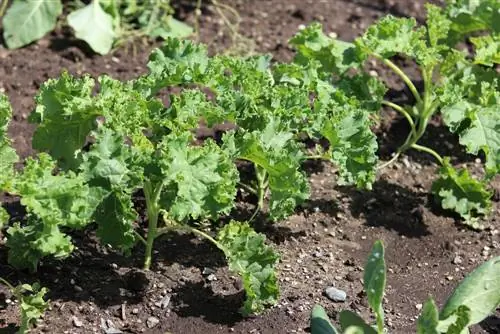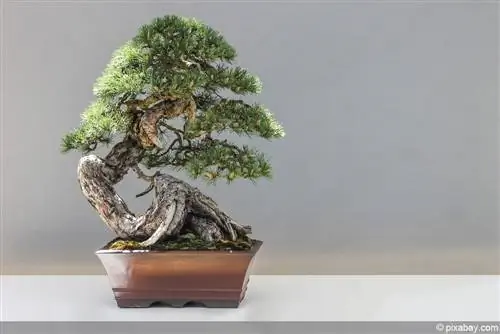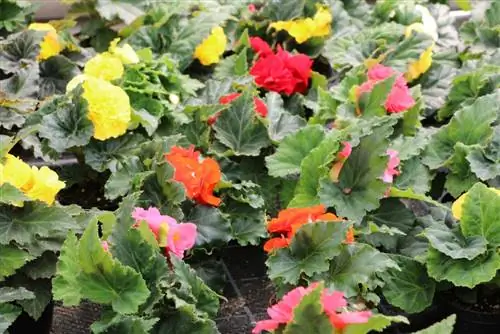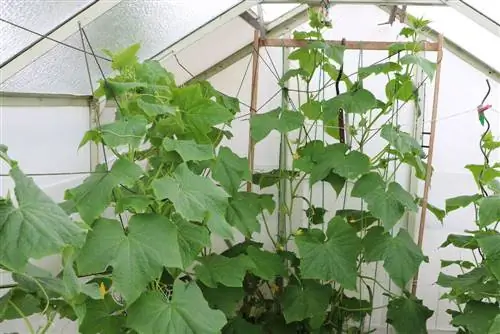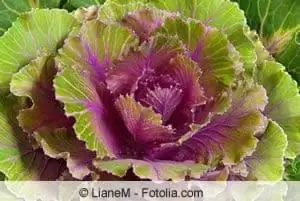- Author admin [email protected].
- Public 2023-12-17 03:39.
- Last modified 2025-01-24 12:45.
Kale has been traditionally grown in Germany for a long time and is one of the classic winter vegetables. Kale is easy to grow and maintain in your own garden if the crop rotation and necessary soil preparation and cultivation are followed. Kale can be grown as a biennial. The main harvest occurs in the second year. Kale can be harvested regularly from the spring of the second year. Since kale needs frost to fully develop its flavor, the harvest yields can be frozen briefly in a freezer from the 2nd year onwards to simulate the frost effect.
Soil preparation
Kale can be sown in a seedbed from May. Cultivation can take place at a distance of 40 centimeters from the next plant. Kale grows particularly well in medium-heavy clay soil. Acidic soil is rather unsuitable, but can be adjusted by adding lime. Before sowing, the planting area should be loosened well and fertilized with humus. So that the pH value of the soil is aligned with the needs of the kale, lime can be incorporated into the soil when fertilizing compost and humus.
The sowing
Kale can only be sown directly into the ground when night frosts are no longer expected. This is therefore only possible from mid-May. The seeds are inserted approximately 2 centimeters deep into the ground and covered with soil. The soil must then be watered well. When sowing, the planting distance is around 40 centimeters from one plant to the next. It is also possible to grow small kale plants on the windowsill. Egg cartons that are no longer used are suitable for this. Simply add potting soil to the wells and press one seed per well into the soil. The soil should always be kept slightly moist, but must not become moldy. A sunny spot on the windowsill is an advantage. As soon as the small plants have reached a size of approx. 5-10 centimeters, they can be planted in the actual bed.
The small, fine root connections must not be injured. To prevent this, the egg cartons can be cut up and placed in the ground with the small kale plant. The cardboard of the egg carton will decompose quickly and the small kale plant can develop well. The plants should be planted in their actual growing location by August at the latest. Pre-breeding noticeably increases the harvest yield in the first year of harvest.
Crop rotation and the right location
To thrive, kale plants need a sunny, warm location that can be well watered. Kale needs a lot of water to develop. Moats between plants have proven helpful. In order to ensure good yields and avoid diseases, it is crucial to consider crop rotation. After the kale is finally harvested, no more kale may be grown in that location for the next 3 years. Kale should also not be planted in places where other types of cabbage or cruciferous vegetables previously grew. This is the only protection against clubroot. For this reason, you should also avoid planting other types of cabbage (white cabbage, red cabbage, Brussels sprouts, etc.) in the immediate vicinity. Beans, tomatoes, salads, legumes and spinach are suitable as direct neighbors.
The correct planting distance
So that kale plants can develop unhindered, they need a planting distance of 50 centimeters from other kale plants, i.e. This means that 50 centimeters of space should be kept free to the front, back, right and left. Kale is biennial, so it can be left in the garden over the winter. Harvesting is also possible during periods of frost, although the plant will then have stopped growing. As soon as the frost has passed and the first rays of sunshine warm the earth, the kale begins to sprout and grow again. The leaves are harvested from the outside in.
Possible pest infestation and prevention
The main pest that can attack kale is the cabbage fly. Hobby gardeners should therefore ensure early on that the kale plant cannot be infected in the first place. Vegetable fly nets that are stretched over the plants offer successful protection as the cabbage fly cannot get through them. Kale is also threatened by flea beetles. To keep this away from the plants, it is sufficient to always keep the soil well moistened.
Kale needs a lot of nitrogen during the growing phases. This can be supplied naturally by preparing nettle manure and using it for fertilization. As soon as the kale lacks fertilizer, this can be recognized by the formation of yellow leaves. Nettle manure offers many advantages; it can also be used to protect against pests. If the pest infestation becomes too large, a mixture of neem oil, rimulgan and water can be sprayed on the kale plants. This prevents the pests from reproducing and works in a purely biological way. Neem oil products are permitted in organic farming and fruit and vegetable crops and are absolutely non-toxic.
The Harvest of Leaves
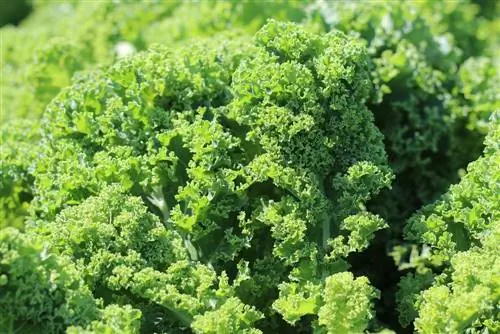
Kale plants can grow to a height of over 150 centimeters in the second year. The leaves should be harvested regularly from the outside in to stimulate growth. Harvesting should always take place regularly, as the tender leaves taste particularly good. If the leaves stay on the plant for too long, they develop too many bitter substances, which have an unfavorable effect on the taste. To neutralize the bitter substances in kale, you can freeze the harvest after processing. When cooking, the kale portions are thawed again but have lost their bitter taste. Deep freezing is particularly important for crops outside the natural frost period. During the growth period, compost fertilization should be carried out every now and then, and attention should be paid to the necessary lime content. The stronger a plant is, the more resistant it is to pests.
More care tips
Soil preparation
The kale thrives best in permeable, heavy to medium-heavy soil enriched with compost or manure. In the winter before planting, rake the planting site thoroughly and sprinkle in some lime. This makes it possible to keep the soil in a neutral area and prevent clubroot. So you can rake some compost into the upper layers of soil about 2 weeks before planting as starting capital.
Cultivation
You can only sow kale from mid-May, not earlier, otherwise there is a risk that too many leaves will develop, which will also lose their frost hardiness. Place the seeds in grooves about 2cm deep, which should be around 40cm apart. The strong seedlings are then thinned out to 50cm after some time. Overgrown wild herbs are occasionally removed and the soil around the plant is compacted so that it cannot be loosened by the wind.
Mixed Culture
Beetroot, spinach, lettuce and radicchio are suitable as neighboring plants for the kale. If possible, do not place Brussels sprouts and other cruciferous vegetables as well as most types of onions next to the kale. The kale should only be replanted on the same bed after about 3 years.
Harvest
The kale can be harvested after about 3-5 months. The first frost refines the taste of the leaves and gives them their typical aroma. When harvesting, the young leaves should always be cut from the middle, as they are the most tender and therefore taste the best. If necessary, the entire plant can of course be cut off above the ground. However, yellow and oversized leaves should not be used for cooking; these should be carefully plucked off in advance. When the kale begins to bloom, pull the plant out of the ground and put it in the compost.
Pests
The biggest enemies of this type of cabbage are the flea beetles, small, metallic dark blue shimmering beetles. That's why beneficial insects should be encouraged in every garden, because they reduce the number of beetles. In severe cases, wormwood broth or tansy tea can be injected. Tansy tea is also used against cabbage gall weevils. The small cabbage fly with its annoying larvae can be kept away with a vegetable fly net.
Variety selection:
- Half-tall Green Krauser=a winter-hardy variety with heavily curled leaves that reaches 40 -60cm in height
- Pentlang Brigg=winter-hardy variety, whose young shoots and flower stalks are also suitable for consumption, reaches a height of around 50cm
- Hammer=low-growing, frost-hardy variety that barely grows to 30cm high, long-oval, rich green leaves with a short petiole and fine curl
Usage
The kale is suitable for soups, purees and as a vegetable side dish. Delicious winter salads can be prepared from raw cabbage, such as freshly picked kale leaves in a lemon marinade.

